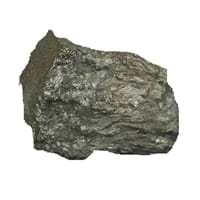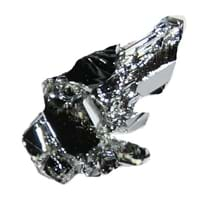Erbium Ruthenium Comparison
Periodic Table
Symbol
Er
Ru
Group Number
Not Available
8
10
Period Number
6
5
Block
f block
d block
Element Family
Lanthanide
Transition Metal
CAS Number
7440520
35
7440188
99+
Space Group Name
P63/mmc
P63/mmc
Space Group Number
194.00
5
194.00
5
Facts
Interesting Facts
- Erbium metal is used as alloyed with Vanadium to make it softer.
- Recent studies shows that it is helpful for metabolism.
- Ruthenium element has been extracted from used nuclear fuel.
- Ruthenium metal also produces as a by-product of the Nickel mining.
Sources
Mining
By-product of Nickel Refining, Found in Minerals, Mining
History
Who Discovered
Carl Gustaf Mosander
Karl Ernst Claus
Discovery
In 1842
In 1844
Abundance
Abundance In Universe
2 * 10-7 %
22
4 * 10-7 %
20
Abundance In Sun
~0.0000001 %
26
~0.0000005 %
22
Abundance In Meteorites
0.00 %
36
0.00 %
26
Abundance In Earth's Crust
0.00 %
32
0.00 %
99+
Abundance In Oceans
0.00 %
36
0.00 %
38
Uses
Uses & Benefits
- It has a tendency to get tarnished in the open air, but when alloyed with elements like erbium, vanadium, its hardness levels decreases.
- Its compounds like Erbium oxide is used in safety glasses of welders and metal workers.
- It is used for producing chip resistors and contact.
- Ruthenium oxide is used to coat the anodes cells for chlorine production in chemical industry. It also works as catalysts for ammonia and acetic acid reaction.
Industrial Uses
Chemical Industry
Aerospace Industry, Automobile Industry, Chemical Industry, Electrical Industry, Electronic Industry
Medical Uses
NA
Medical Research
Other Uses
Alloys
Alloys
Biological Properties
Toxicity
Mildly Toxic
Low Toxic
Present in Human Body
No
No
Physical Properties
Melting Point
1,522.00 °C
28
2,250.00 °C
8
Boiling Point
2,510.00 °C
99+
3,900.00 °C
14
Appearance
Physical State
Solid
Solid
Color
Silvery White
Silvery White
Luster
Lustrous
Metallic
Hardness
Mohs Hardness
Not Available
6.50
5
Brinell Hardness
814.00 MPa
11
2,160.00 MPa
3
Vickers Hardness
589.00 MPa
19
Not Available
Speed of Sound
2,830.00 m/s
28
5,970.00 m/s
4
Optical Properties
Allotropes
No
No
α Allotropes
Not Available
Not Available
β Allotropes
Not Available
Not Available
γ Allotropes
Not Available
Not Available
Chemical Properties
Chemical Formula
Er
Ru
Isotopes
Known Isotopes
31
8
26
13
Electronegativity
Pauling Electronegativity
1.24
36
2.20
4
Allred Rochow Electronegativity
1.11
29
1.42
18
Allen Electronegativity
Not Available
1.54
25
Electropositivity
Pauling Electropositivity
2.76
18
1.80
99+
Ionization Energies
1st Energy Level
589.30 kJ/mol
99+
710.20 kJ/mol
32
2nd Energy Level
1,150.00 kJ/mol
99+
710.22 kJ/mol
99+
3rd Energy Level
2,194.00 kJ/mol
99+
2,747.00 kJ/mol
37
4th Energy Level
4,120.00 kJ/mol
33
Not Available
Electrochemical Equivalent
2.08 g/amp-hr
28
1.26 g/amp-hr
99+
Electron Work Function
Not Available
4.71 eV
9
Other Chemical Properties
Ionization, Radioactive Isotopes, Solubility
Anti Corrosion, Ionization, Radioactive Isotopes, Solubility
Atomic Properties
Atomic Number
68
99+
44
99+
Electron Configuration
[Xe] 4f12 6s2
[Kr] 4d7 5s1
Crystal Structure
Hexagonal Close Packed (HCP)
Hexagonal Close Packed (HCP)
Crystal Lattice
HCP-Crystal-Structure-of-Erbium.jpg#100
rystal-Structure-of-Ruthenium.jpg#100
Atom
Number of Protons
68
99+
44
99+
Number of Neutrons
99
33
57
99+
Number of Electrons
68
99+
44
99+
Radius of an Atom
Atomic Radius
176.00 pm
18
134.00 pm
99+
Covalent Radius
189.00 pm
19
146.00 pm
38
Van der Waals Radius
Not Available
200.00 pm
28
Atomic Weight
167.26 amu
99+
101.07 amu
99+
Atomic Volume
18.40 cm3/mol
25
8.30 cm3/mol
99+
Adjacent Atomic Numbers
Valence Electron Potential
49.00 (-eV)
29
64.00 (-eV)
22
Lattice Constant
355.88 pm
39
270.59 pm
99+
Lattice Angles
π/2, π/2, 2 π/3
π/2, π/2, 2 π/3
Lattice C/A Ratio
1.57
17
1.58
11
Mechanical Properties
Density
Density At Room Temperature
9.07 g/cm3
99+
12.45 g/cm3
27
Density When Liquid (at m.p.)
8.86 g/cm3
23
10.65 g/cm3
16
Tensile Strength
Not Available
Not Available
Viscosity
Not Available
Not Available
Vapor Pressure
Vapor Pressure at 1000 K
0.00 (Pa)
20
Not Available
Vapor Pressure at 2000 K
Not Available
0.00 (Pa)
23
Elasticity properties
Shear Modulus
28.30 GPa
25
173.00 GPa
4
Bulk Modulus
44.40 GPa
27
220.00 GPa
7
Young's Modulus
69.90 GPa
29
447.00 GPa
3
Poisson Ratio
0.24
28
0.30
14
Other Mechanical Properties
Malleable
Ductile, Malleable
Magnetic Properties
Magnetic Characteristics
Specific Gravity
9.07
32
12.45
19
Magnetic Ordering
Paramagnetic
Paramagnetic
Electrical Properties
Electrical Property
Conductor
Conductor
Resistivity
0.86 nΩ·m
99+
71.00 nΩ·m
38
Electrical Conductivity
0.01 106/cm Ω
99+
0.14 106/cm Ω
16
Electron Affinity
50.00 kJ/mol
21
101.30 kJ/mol
10
Thermal Properties
Specific Heat
0.17 J/(kg K)
34
0.24 J/(kg K)
24
Molar Heat Capacity
28.12 J/mol·K
11
24.06 J/mol·K
99+
Thermal Conductivity
14.50 W/m·K
99+
117.00 W/m·K
13
Critical Temperature
Not Available
Not Available
Thermal Expansion
12.20 µm/(m·K)
31
6.40 µm/(m·K)
99+
Enthalpy
Enthalpy of Vaporization
261.00 kJ/mol
35
567.80 kJ/mol
10
Enthalpy of Fusion
17.20 kJ/mol
15
25.50 kJ/mol
7
Enthalpy of Atomization
314.00 kJ/mol
33
603.00 kJ/mol
9
Standard Molar Entropy
73.10 J/mol.K
11
28.50 J/mol.K
99+
|
||
|
||
|












